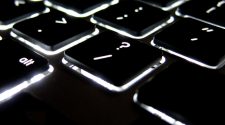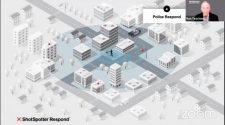As China seeks ever more control over its population, it’s turning to one tool of particular note: people’s faces.
On Sept. 27, the nation’s information-technology ministry announced that telecom carriers, from December, must scan the face of anyone applying for mobile and internet service. Using facial-recognition technology, the companies will verify that the applicant is indeed the owner of a valid ID.
Meanwhile the Hong Kong government invoked emergency powers on Oct. 4 to ban demonstrators from wearing face masks. People may believe they can evade legal liability for their actions when their faces are concealed, noted Maria Tam, deputy director of the Chinese parliament’s Basic Law Committee in Hong Kong. The new rule, she said, would send a message that demonstrators can be identified and arrested.
The consequences of being identified can be severe. In Hong Kong, demonstrators charged with rioting face up to 10 years in prison (among their five demands is a halt to characterizing the protests as “riots”). In mainland China, displeasing the government can land one in even more trouble.
In August, Hong Kong protesters vandalized “smart” lampposts that they suspect are used for surveillance, not just for collecting data on traffic, weather, and air quality. The government plans to install many more of the devices. Meanwhile in mainland China, facial recognition and artificial intelligence—combined with a social credit score—are helping authorities reward or punish citizens for certain behavior, even jaywalking.
With or without China, the advent of facial-recognition technologies would likely draw the interest of repressive governments seeking new ways to monitor people. But Beijing’s push in this area makes the threat stronger.
The Chinese Communist Party is busy exporting its surveillance capabilities to like-minded regimes, while also promoting its authoritarian system as a political model for other nations to follow. It uses the Xinjiang region, home to the repressed Uyghur minority, as a testbed for data-driven surveillance, refining systems that could eventually spread throughout China and beyond.
Perhaps most disturbing, such efforts are still in their early days. Beijing is just getting started, and faces are increasingly in its sights.
This essay was originally published in the weekend edition of the Quartz Daily Brief newsletter. Sign up for it here.



















